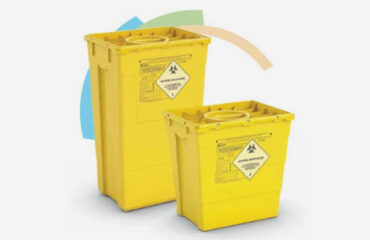Reclaim Waste for Beginners
Reclaim Waste for Beginners
Blog Article
8 Simple Techniques For Reclaim Waste
Table of ContentsGet This Report on Reclaim WasteMore About Reclaim WasteHow Reclaim Waste can Save You Time, Stress, and Money.The Ultimate Guide To Reclaim WasteThe 10-Second Trick For Reclaim Waste
Domestic sewage waste refers to the waste and items from a property septic tank. The appropriate monitoring and disposal of domestic sewer waste call for liquid waste to be moved to a sewage treatment plant where the proper approaches and equipment are used to purify and dispose of waste.
Commercial waste usually consists of prospective risks, such as flammable materials or a mixture of liquid and solid waste items, and requires an advanced and comprehensive disposal procedure. The disposal of industrial waste typically includes the filtering of waste prior to transport to make certain safe and appropriate disposal. Hazardous waste is produced from byproducts and drainage of commercial procedures and manufacturing.
This type of waste can not use the same sewage monitoring transportation or processes as septic or industrial liquids. The commercial waste management process requires the assessment and testing of liquid waste prior to it goes through the disposal procedure (liquid waste removal melbourne). Overflow waste is the liquid waste that comes from overflow and excess stormwater in highly populated areas or cities
Drainage waste can trigger contamination and flooding if not handled effectively. Making sure proper waste administration can stop calamities and reduce ecological harm.
Get This Report about Reclaim Waste
Get in touch with PROS Providers today to learn more about our waste monitoring and disposal solutions and the proper ways to take care of the liquid waste you create.
(https://reclaimwaste1.edublogs.org/2024/11/12/efficient-liquid-waste-removal-and-disposal-your-complete-guide-to-sustainable-waste-management/)Do you recognize what occurs to your water when you end, purge the toilet or drain the cleaning device? No? Well, it deserves knowing. This supposed 'wastewater' is not just a vital resource but, after treatment, will be released to our land, rivers or the ocean. Used water from toilets, showers, baths, kitchen sinks, laundries and commercial processes is understood as wastewater.

water made use of to cool down machinery or tidy plant and equipment). Stormwater, a kind of wastewater, is runoff that flows from agricultural and urban areas such as roofs, parks, yards, roads, paths and rain gutters right into stormwater drains pipes, after rainfall. Stormwater streams neglected directly to regional creeks or rivers, ultimately getting to the sea.
The smart Trick of Reclaim Waste That Nobody is Discussing
In Queensland, many wastewater is treated at sewer therapy plants. Wastewater is delivered from residential or industrial sites with a system of drains and pump stations, referred to as sewerage reticulation, to a sewer treatment plant. City governments construct, keep and operate most sewage treatment plants. Operators are accredited under the Environmental Security Act 1994 to discharge treated wastewater at an appropriate environmental standard into waterways.
The Department of Natural Resources encourages local governments concerning managing, operating and preserving sewerage systems this post and therapy plants. In unsewered locations, regional federal governments may need householders to mount specific or family sewer treatment systems to treat residential wastewater from toilets, cooking areas, shower rooms and laundries. The Division of Natural Resources authorises making use of family systems when they are shown to be effective.
A lot of stormwater receives no therapy. In some new subdivisions, treatment of some stormwater to get rid of trash, sand and gravel has begun using gross contaminant catches. Wastewater therapy occurs in four phases: Removes solid matter. Larger solids, such as plastics and other things wrongly released to sewage systems, are gotten rid of when wastewater is passed through displays.
Wastewater then streams right into large storage tanks where solids settle and are eliminated as sludge. Oil and scum are skimmed from the surface area. Uses little living organisms referred to as micro-organisms to break down and eliminate continuing to be liquified wastes and great bits. Micro-organisms and wastes are integrated in the sludge. Eliminates nitrogen and phosphorus nutrients that can create algal blooms in our waterways and intimidate marine life.
How Reclaim Waste can Save You Time, Stress, and Money.
Nutrient removal is not readily available at all sewage treatment plants due to the fact that it needs expensive specialized tools. Clear liquid effluent produced after therapy might still have disease-causing micro-organisms - liquid waste disposal.

The majority of wastewater flows right into the sewage system. Under the Act, local federal governments provide authorizations and licences for ecologically appropriate tasks (Ages) involving wastewater launches that could have a regional impact.
Reclaim Waste Fundamentals Explained
Or else, examples are considered research laboratory evaluation. Commonly several tests are required to establish the degrees of each of the different contaminants such as oils, hefty steels and chemicals in water. Monitoring offers valid details about water quality and can validate that permit problems are being satisfied. The info obtained through surveillance provides the basis for making water top quality choices.
Report this page